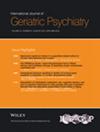Association of socioeconomic status and poststroke cognitive function: A systematic review and meta-analysis
Abstract
Background
Stroke survivors are at high risk of coping with cognitive problems after stroke. In recent decades, the relationship between socioeconomic status (SES) and health-related outcomes has been a topic of considerable interest. Learning more about the potential impact of SES on poststroke cognitive dysfunction is of great importance.
Objective
The purpose of this systematic review and meta-analysis was to summarize the association between SES and poststroke cognitive function by quantifying the effect sizes of the existing studies.
Method
We searched studies from PubMed, Ovid, Embase, Cochrane, Scopus, and PsychINFO up to January 30th 2024 and the references of relevant reviews. Studies reporting the risk of poststroke cognitive dysfunction as assessed by categorized SES indicators were included. The Newcastle-Ottawa scale and the Agency for Healthcare Research and Quality were used to evaluate the study quality. Meta-analyses using fixed-effect models or random-effect models based on study heterogeneity were performed to estimate the influence of SES on cognitive function after stroke, followed by subgroup analyses stratified by study characteristics.
Results
Thirty-four studies were eligible for this systematic review and meta-analysis. Of which, 19 studies reported poststroke cognitive impairment (PSCI) as the outcome, 13 reported poststroke dementia (PSD), one reported both PSCI and PSD, and one reported vascular cognitive impairment no dementia. The findings showed that individuals with lower SES levels had a higher risk of combined poststroke cognitive dysfunction (odds ratio (OR) = 1.91, 95% confidence interval (CI) = 1.59–2.29), PSCI (OR = 2.09, 95% CI = 1.57–2.78), and PSD (OR = 1.95, 95% CI = 1.48–2.57). Subgroup analyses stratified by SES indicators demonstrated the protective effects of education and occupation against the diagnoses of combined poststroke cognitive dysfunction, PSCI, and PSD.
Conclusions
Stroke survivors belonging to a low SES are at high risk of poststroke cognitive dysfunction. Our findings add evidence for public health strategies to reduce the risk of poststroke cognitive dysfunction by reducing SES inequalities.

 求助内容:
求助内容: 应助结果提醒方式:
应助结果提醒方式:


